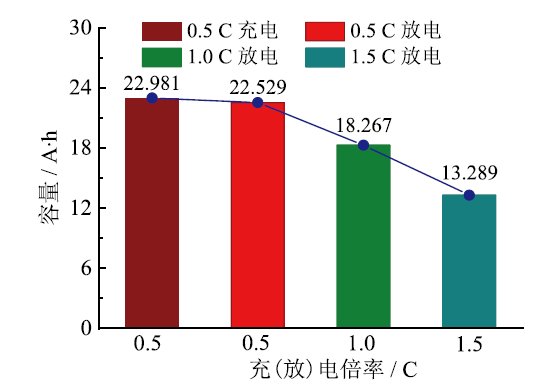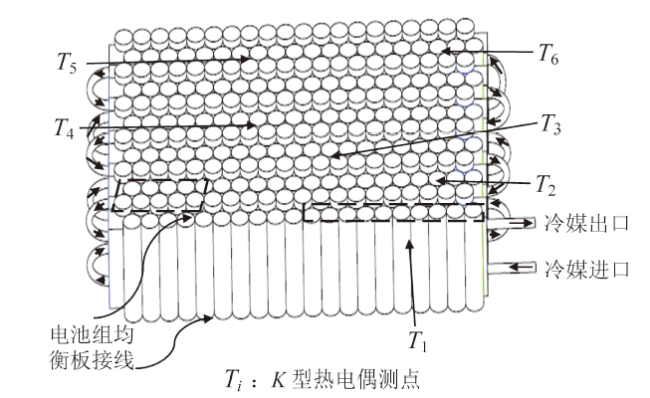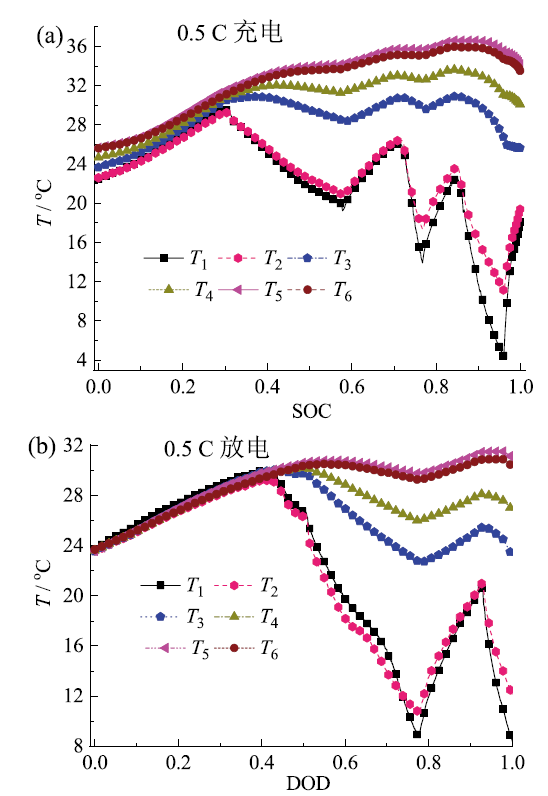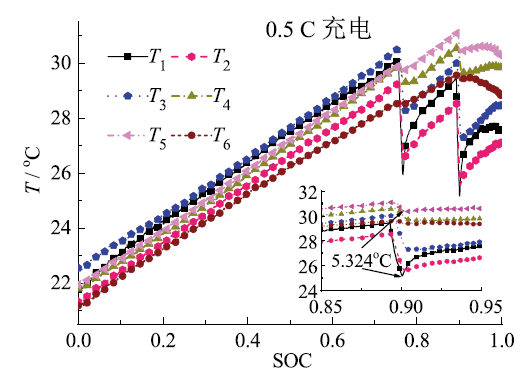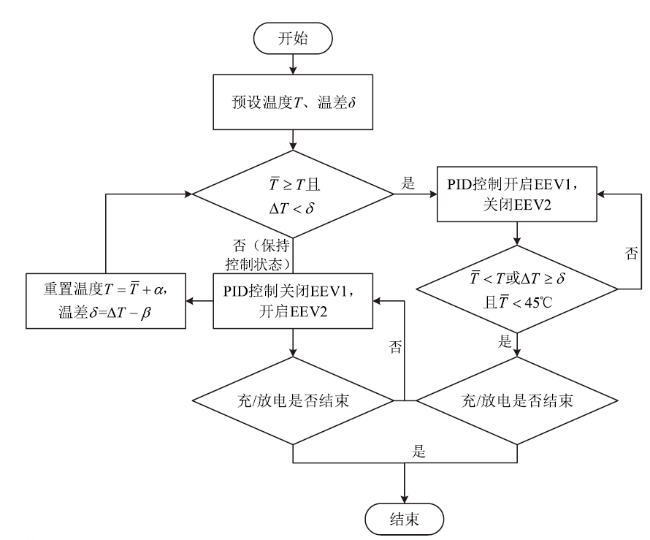0 引 言
1 实验部分
1.1 电池模组结构设计
Table 1 Battery and battery module parameters表1 电池单体和电池模组参数 |
| 参数 | 参数值 |
|---|---|
| 电池直径 | 18.5 mm |
| 电池高度 | 65 mm |
| 标称容量 | 2 600 mA∙h |
| 运行电压 | 2.75 ~ 4.2 V |
| 电池模组电池总数 | 240节 |
| 电池组 | 10节 |
| 电池模组串联数 | 24组 |
| 电池模工作电压 | 66 ~ 100.8 V |
Fig. 1 Production process of battery module图1 电池模组制作流程 |
1.2 实验系统
Fig. 2 Schematic of the experimental test rig图2 实验试验台示意图 |
1.3 电池模组充/放电设置
Fig. 3 Battery module ratio-capacity diagram图3 电池模组倍率-容量关系图 |
2 实验结果与讨论
2.1 温度测点布置
Fig. 4 Temperature measurement point layout图4 温度测点布置图 |
2.2 固定参数PID算法
Fig. 5 The temperature curve of the battery module when EEV is controlled by the fix parameter PID algorithm and charged/ discharged rate is at 0.5 C图5 EEV由固定参数PID算法控制时,电池模组以0.5 C充/放电的温度曲线 |
2.3 限定温差PID算法
Fig. 6 The relationship between SOC and temperature when EEV is controlled by the limited temperature difference PID algorithm, and the battery module is charged at 0.5 C图6 EEV由限定温差PID算法控制,电池模组以0.5 C充电时SOC与温度的关系 |
2.4 动态温度PID算法
Fig. 7 Flow chart of dynamic temperature PID algorithm图7 动态温度PID算法流程图 |
Table 2 Similarities and differences of control algorithms表2 控制算法异同 |
| 算法 | 不同点 | 相同点 |
|---|---|---|
| PID算法 | 经典PID算法控制 | 均采用基于PID原理编写算法 |
| 限定温差PID算法 | 温差ΔT ≥ δ,结束PID算法控制 | |
| 动态温度PID算法 | $\bar{T}$ < T或ΔT ≥ δ,结束PID算法控制; 重置温度T =$\bar{T}$ + α, 温差δ = ΔT - β。 |
Fig. 8 Temperature evolution of the battery module for different rates when EEV is controlled by dynamic temperature PID algorithm图8 EEV由动态温度PID算法控制时,电池模组在各工况下的温度演化图 |






